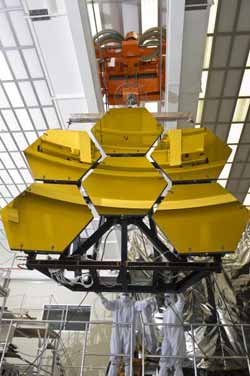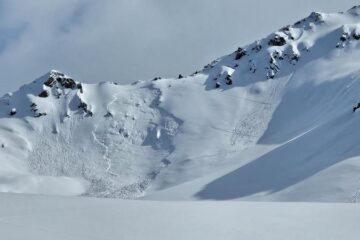NASA's James Webb Space Telescope completes first round of cryogenic mirror test

Engineers and technicians guide six James Webb Space Telescope’s mirror segments off the rails after completing final cryogenic testing this week at Marshall. Credit: (NASA/Emmett Given)<br>
The ten week test series included two tests cycles where the mirrors were chilled down to -379 degrees Fahrenheit, then back to ambient temperature to ensure the mirrors respond as expected to the extreme temperatures of space.
A second set of six mirror assemblies will arrive at Marshall in late July to begin testing, and the final set of six will arrive in the fall.
The X-ray and Cryogenic Facility at NASA's Marshall Space Flight Center in Huntsville, Ala. provides the space-like environment to help engineers measure how well the telescope will image infrared sources once in orbit.
Each mirror segment measures approximately 4.3 feet (1.3 meters) in diameter to form the 21.3 foot (6.5 meters), hexagonal telescope mirror assembly critical for infrared observations. Each of the 18 hexagonal-shaped mirror assemblies weighs approximately 88 pounds (40 kilograms). The mirrors are made of a light and strong metal called beryllium, and coated with a microscopically thin coat of gold to enabling the mirror to efficiently collect infrared light.
The telescope is a combined project of NASA, the European Space Agency and the Canadian Space Agency. Northrop Grumman is the prime contractor under NASA's Goddard Space Flight Center in Greenbelt, Md. Ball Aerospace & Technologies Corp. in Boulder, Colo., is responsible for mirror development. L-3- Tinsley Laboratories Inc. in Richmond, Calif. is responsible for mirror grinding and polishing.
Media Contact
More Information:
http://www.nasa.govAll latest news from the category: Physics and Astronomy
This area deals with the fundamental laws and building blocks of nature and how they interact, the properties and the behavior of matter, and research into space and time and their structures.
innovations-report provides in-depth reports and articles on subjects such as astrophysics, laser technologies, nuclear, quantum, particle and solid-state physics, nanotechnologies, planetary research and findings (Mars, Venus) and developments related to the Hubble Telescope.
Newest articles

AI – Avalanche Intelligence at the SLF
Machine-trained algorithms assess the current avalanche situation in a similar way to humans – with different approaches, strengths and weaknesses. This text has been translated automatically. Forecast for Saturday, February…

Trotting robots reveal emergence of animal gait transitions
A four-legged robot trained with machine learning by EPFL researchers has learned to avoid falls by spontaneously switching between walking, trotting, and pronking – a milestone for roboticists as well…

Innovation promises to prevent power pole-top fires
Engineers in Australia have found a new way to make power-pole insulators resistant to fire and electrical sparking, promising to prevent dangerous pole-top fires and reduce blackouts. Pole-top fires pose…





















